The High Sierra changes so much throughout the year, it’s almost like a whole new place every season. After wandering these mountains in all kinds of weather, I’ve realized each time has its own kind of magic—and, yeah, its own headaches too.
Spring hits with roaring waterfalls, summer unlocks those high trails and chilly lakes, and autumn? That’s when the whole place glows gold and orange. Your timing shapes the whole adventure—maybe you’re chasing thundering cascades in March, scrambling up granite in July, or hunting for that perfect aspen photo in October.
Let’s dive into why each season stands out in the High Sierra. I’ll share my favorite spots for waterfalls, alpine hikes, and leaf-peeping, plus some tips I wish someone had told me before I set out.
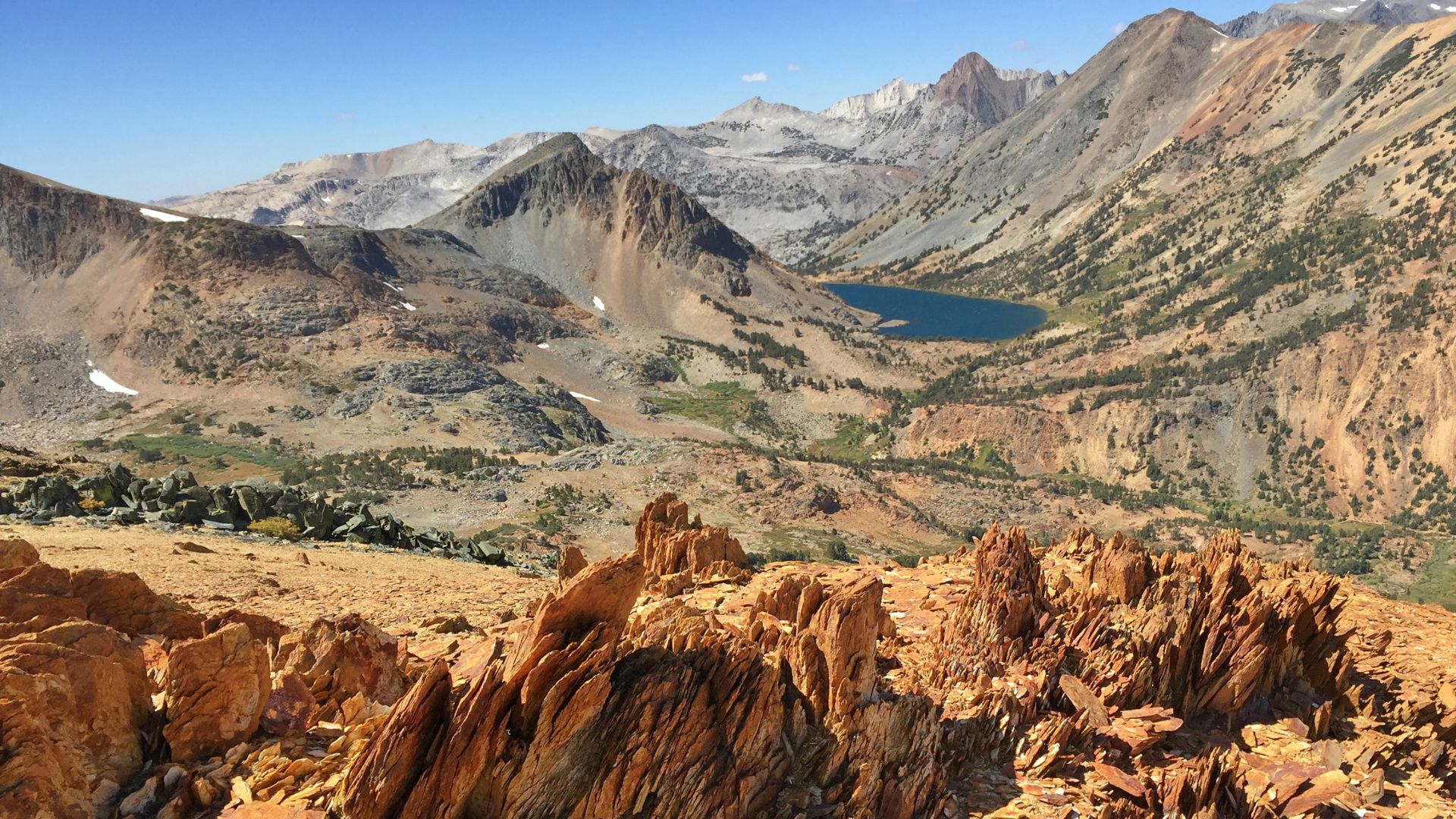
Spring: Chasing Thundering Waterfalls in the High Sierra
When spring snow starts melting, the High Sierra basically turns into waterfall heaven. May is wild—water just pours down every cliff and valley.
Yosemite National Park totally steals the show, with waterfalls everywhere and wildflowers popping up along the spray.
Peak Waterfall Destinations in Yosemite National Park
Yosemite Falls is my go-to pick for spring. At 2,425 feet, it’s massive and gets downright ferocious in May.
I’ve stood there and watched what must be thousands of gallons crashing down every minute. The one-mile paved loop is easy and takes you right to the base of Lower Yosemite Fall.
Bridalveil Fall brings that classic Yosemite vibe. It flows year-round, but in spring, it turns into a thundering wall of water.
The half-mile paved walk is a breeze. If you want the iconic shot, check it out from Tunnel View—El Capitan and Half Dome in the same frame.
Vernal and Nevada Falls are for those who want to get up close and soaked. They drop 317 and 594 feet along the Mist Trail.
In the spring, the spray is relentless. The roar echoes through the whole valley.

Best Times to Visit and Photography Tips
May is hands-down the best for waterfalls. Snowmelt peaks, and the water just explodes off the cliffs.
Late April to early June usually guarantees big flows. I’ve found weekdays are way less crowded, so you can actually hear the falls instead of a hundred people.
Early morning is my favorite time for photos. The light is soft, the mist glows, and there are fewer people.
Bring a rain cover for your camera near Vernal Fall. The spray there is no joke.
Afternoons work better for east-facing falls. The shifting sunlight changes everything—sometimes even the mood of the whole place.
Don’t forget extra batteries. Cold spring mornings can zap your camera faster than you’d think.
Wildflowers and Blooming Scenery Near Falls
California poppies start popping up in late spring, especially lower down. They’re shockingly bright against all that granite.
Some of my best wildflower shots came from around Hetch Hetchy’s Wapama Falls. Rushing water plus wild blooms—can’t beat it.
Lupine and Indian paintbrush show up in the meadows near the big falls. Purples and reds everywhere in May.
Snowmelt rivers feed all this color. The spray from the falls helps too—plants go nuts in the moist air.
Dogwood trees bloom white right as the water peaks. You’ll spot them near a bunch of Sierra waterfalls.
Lower areas warm up first, so you get a longer wildflower season down there. Higher meadows take their sweet time.
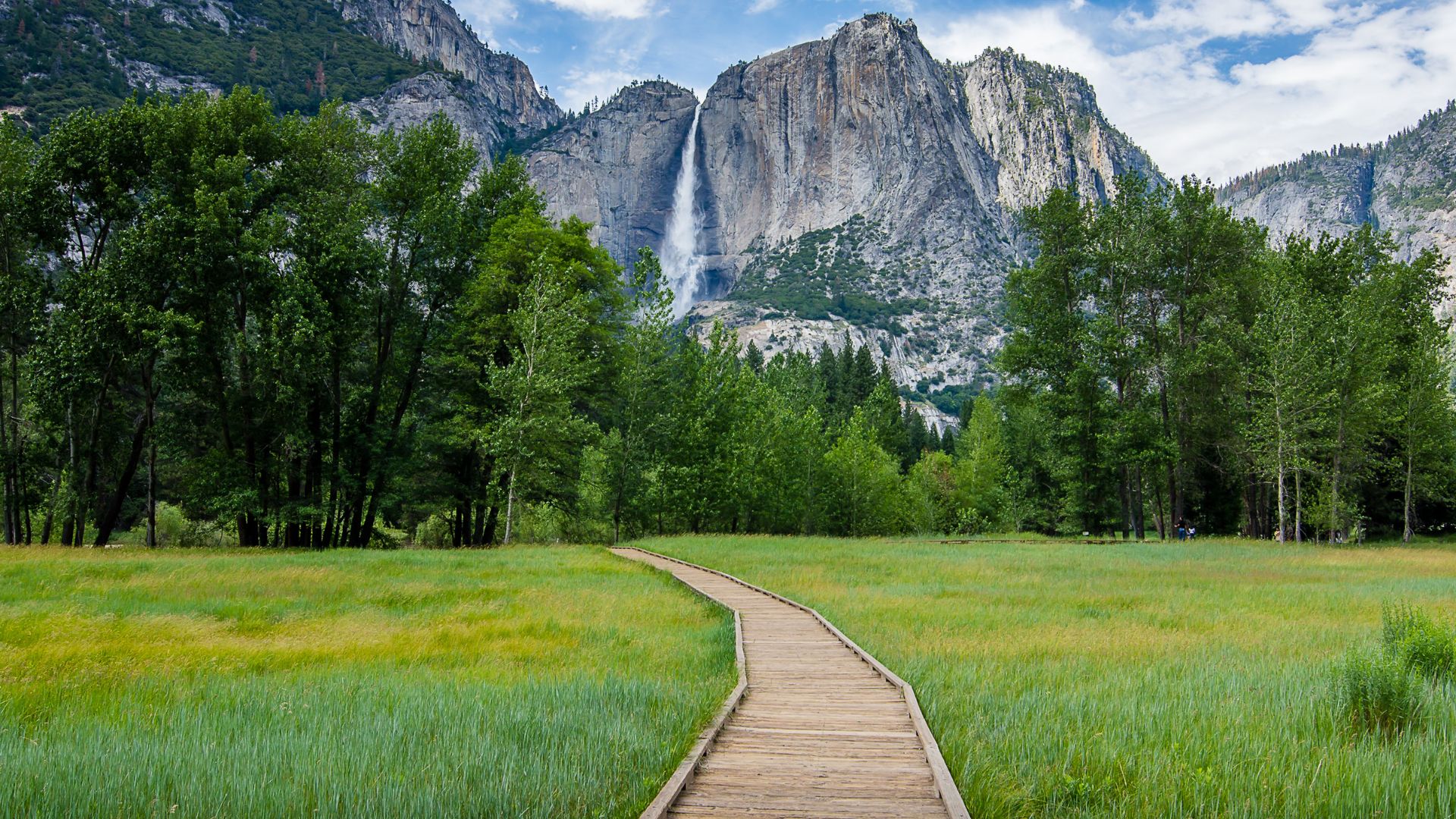
Summer: Alpine Hikes, Lakes, and Outdoor Adventures
In summer, the High Sierra becomes a giant playground. The snow melts away, revealing crystal lakes, endless trails, and wildlife everywhere.
Granite peaks, wildflower meadows, and even some secret swimming holes—it’s the best way to escape the heat.
Iconic High Sierra Hiking Trails
The f is the big one for serious hikers. Stretching 211 miles from Yosemite to Mount Whitney, it’s a bucket-list trek through California’s best alpine scenery.
Day hiking? The Lakes Trail in Sequoia National Park is a solid pick. It’s a moderate 6-mile round trip, and you’ll hit several lakes above 8,000 feet.
The Blue Lake Trail near Bishop is a great intro to Eastern Sierra hiking. It’s 6.2 miles round trip and climbs through wildflower fields up to a perfect alpine lake.
Pacific Crest Trail sections are great for day hikes too. Upper Kinney Lake is a gentle 4-mile stroll with just over 600 feet of elevation gain.
If you’re into rock climbing, you’ll find endless granite walls. The High Sierra’s formations attract climbers of all skill levels.
Top Swimming and Fishing Lakes
Lake Tahoe is still the crown jewel for swimming and water sports. Even in summer, the water stays cool and refreshing.
Bass Lake is warmer—water temps hit the 70s, so it’s perfect for families. No wetsuit needed, finally.
Convict Lake is a fishing hotspot. Locals still talk about a legendary brown trout named “Horgon” that nobody’s managed to catch.
Lake Mamie in the Mammoth Lakes basin is ridiculously clear and surrounded by peaks. Only non-motorized boats are allowed, so it stays peaceful.
| Lake | Elevation | Best Activity | Water Temperature |
|---|---|---|---|
| Bass Lake | 3,400 ft | Swimming | 70°F+ |
| Lake Mamie | 8,900 ft | Fishing | 60°F |
| Convict Lake | 7,600 ft | Fishing | 65°F |

Wildlife Encounters and Safety
Black bears wander all over the High Sierra in summer. I always stash food in bear canisters and keep my camp clean.
Mountain lions live here too, but you’ll almost never see one. Make noise, and don’t hike solo way out in the backcountry.
Marmots and pikas love hanging out by alpine lakes and boulders. They’re fun to spot and make for great photos.
Rattlesnakes show up at lower elevations, especially on the east side. I stick to boots and long pants in brushy spots.
Bear spray is a must for camping or remote hikes. The Sierra is wild—being prepared just makes sense.
Autumn: Golden Aspens and Fall Foliage Experiences
Come autumn, the Eastern Sierra turns into a photographer’s dream. Golden aspens light up the trails and roads.
Peak color usually hits from late September to early October. Cooler nights flip the switch, and suddenly the whole landscape is glowing.
Best Places for Aspen Viewing
June Lake Loop is my absolute favorite for aspens. The drive is easy, and the groves turn electric gold against snow-dusted peaks.
Lundy Canyon is another gem. The canyon’s tight walls make the aspens feel like a golden tunnel.
Conway Summit gives you sweeping Mono Basin views. The aspens here grow thick and seem to ripple across the hills.
Bishop Creek Canyon has groves at all sorts of elevations. I usually start up high—colors show up there first—and then work my way down.
For the best color, I go mid-morning or late afternoon. Angled sunlight makes those leaves glow.
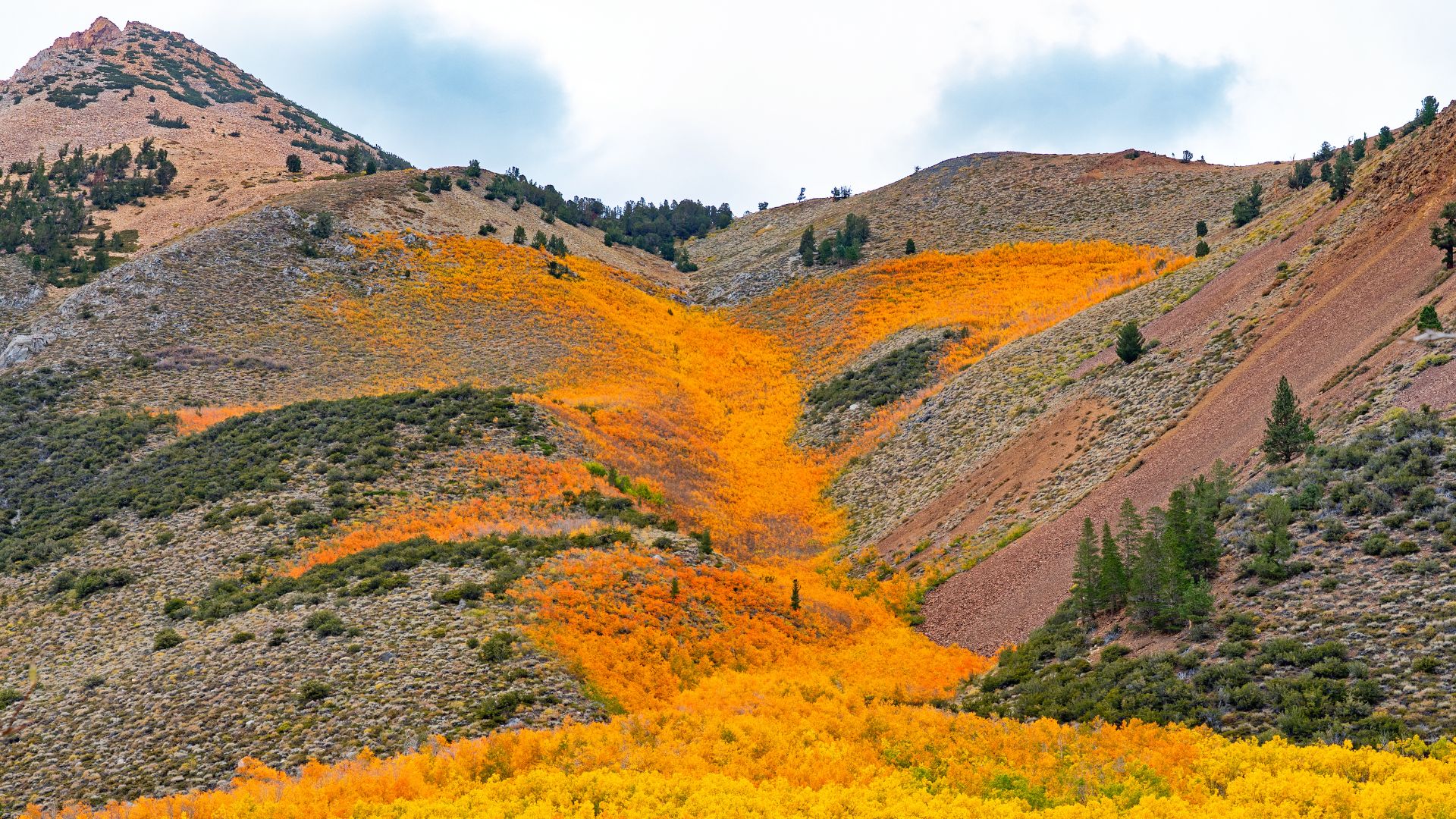
Seasonal Hikes Through Autumn Colors
Parker Lake Trail winds through aspen groves to a clear alpine lake. It’s four miles round trip, not too steep, and the colors are unreal.
Convict Lake Trail is easier, just under three miles and mostly flat. You’ll walk right through golden aspen stands.
McGee Creek Trail climbs through several groves. The first mile is the best for color—perfect for a short hike.
Rush Creek Trail near June Lake mixes dense aspens with mountain mahogany. Wildlife is busy prepping for winter, so keep your eyes open.
Check trail conditions before heading out. Higher trails can get snow by October, which sometimes blocks access to the best aspen spots.
Photography and Leaf Peeping Tips
Timing is everything for aspen photos. Early mornings give a gentle glow, while late afternoons make the gold really pop.
A polarizing filter helps cut glare and boost those colors. It’s a simple trick, but it makes a difference.
Look for contrast—white aspen trunks against gold leaves always catch my eye.
Get close, too. Details like leaves, bark, and even the forest floor tell the story of autumn just as much as the big, sweeping shots.
Weather can flip in a heartbeat. Sometimes you get dramatic clouds and sunbursts—just roll with it and shoot what you get.
Cold drains camera batteries fast. I keep a spare warm in my pocket, just in case.
High Sierra By Region: Must-See Spots and Seasonal Highlights
The High Sierra stretches from volcanic peaks in the east to the blue waters of Lake Tahoe. Every region has its own personality and seasonal surprises.
Eastern Sierra and Its Unique Landscapes
The Eastern Sierra, especially along Highway 395, has always blown me away. It’s got the most variety, hands down.
Spring explodes with wildflowers in the Alabama Hills and Mammoth Lakes. Snowy peaks and desert blooms in the same shot? Yes, please.
Summer is all about alpine lakes and adventure. Around Mammoth, the lakes open up for fishing and paddling. Convict Lake and Lake Mary are my top picks for mountain reflections.
Autumn puts on a wild show. Aspen groves near Bishop and Mammoth glow gold from late September into October.
Key Eastern Sierra Destinations:
- Mammoth Lakes – volcanic peaks and alpine lakes
- Bishop – gateway to the backcountry
- Alabama Hills – weird, wonderful rock formations
- Mono Lake – otherworldly tufa towers
High elevation means short, intense seasons. Snow can linger well into June up high.
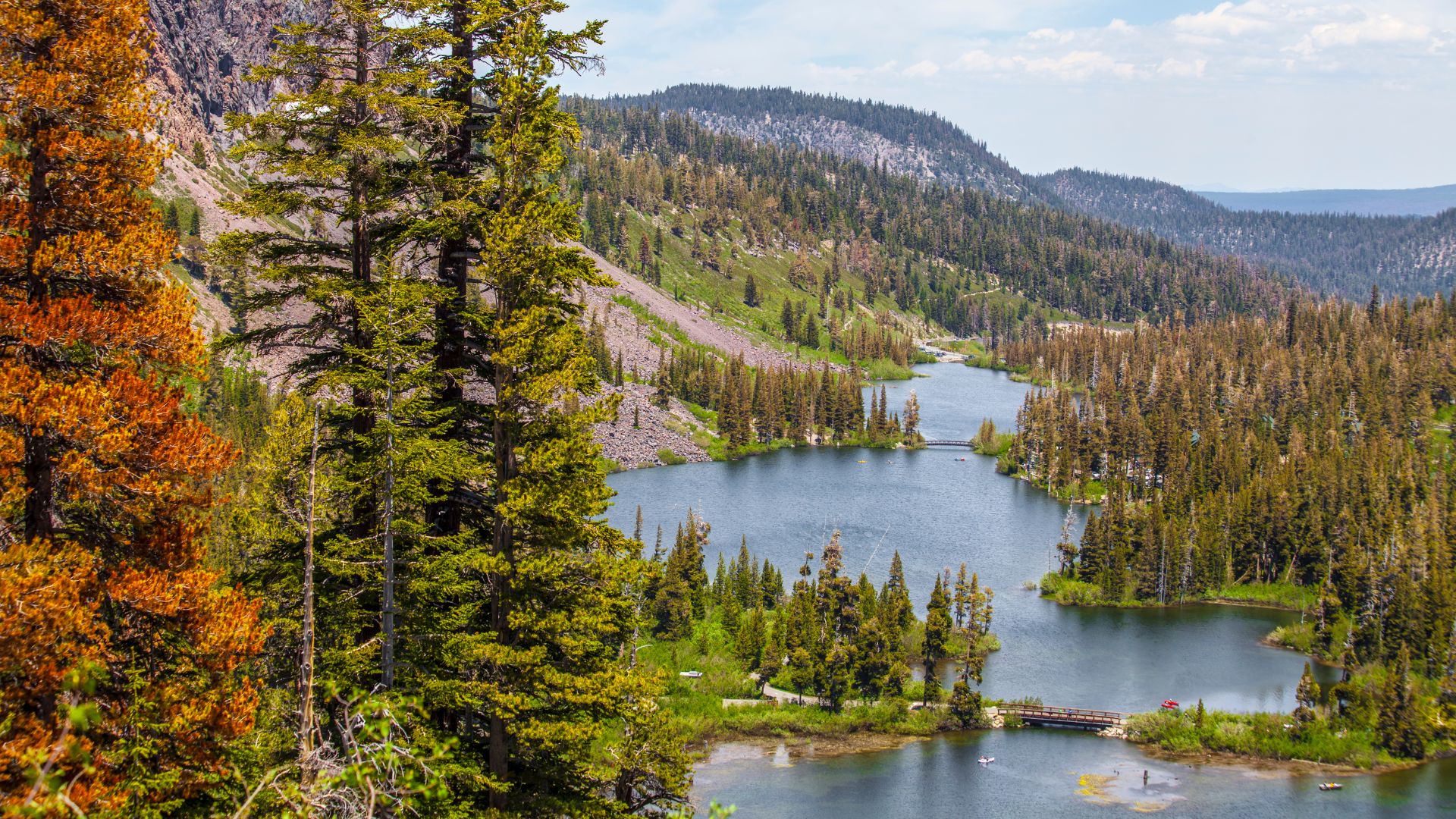
Lake Tahoe and Northern California Gems
Lake Tahoe anchors the north, offering year-round fun and jaw-dropping scenery. The lake is so big, it even has its own weather.
Spring at Tahoe means waterfalls and wildflowers. Eagle Falls and Cascade Falls thunder with snowmelt from April to June. The Tahoe Rim Trail is especially stunning this time of year.
Summer is hiking and crystal-clear water. I love the Stateline Fire Outlook trail for big views and fewer crowds.
Autumn turns the forests gold and red. Aspens along Highway 89 make for a tunnel of color in late September.
Notable Northern California High Sierra Features:
- Emerald Bay – the classic Tahoe photo spot
- Desolation Wilderness – untouched alpine lakes
- Truckee – a historic town with mountain vibes
- Donner Pass – history and hiking rolled into one
Tahoe’s close to San Francisco, so it’s got more amenities—and, honestly, bigger crowds when everyone wants to escape the city.
Hidden Alpine Lakes and Secret Trails
If you wander beyond the well-trodden paths, you’ll find the High Sierra hides a treasure trove of secret lakes and quiet trails. These places feel untouched, and honestly, they might just spoil you for crowded destinations forever.
Remote lake basins deliver that pure alpine vibe I crave. Some of these lakes stay frozen until July—so I usually aim for late summer when the backcountry finally opens up.
The John Muir Wilderness and Ansel Adams Wilderness? They’re packed with lakes that don’t even have names. You can only reach them by hiking in, far from the usual day-hiker crowds.
Multi-day backpacking here feels like stepping into another world. It’s the kind of trip where you might not see another soul for days.
Seasonal access can change fast depending on elevation. Lakes sitting above 10,000 feet usually stay snowed in until August, sometimes even September. Lower lakes open up earlier, sometimes as soon as June.
Hidden Gems Worth Seeking:
- Rae Lakes Loop — a classic Sierra adventure
- Evolution Basin — wild, remote, and high up
- Thousand Island Lake — Banner Peak makes the perfect backdrop
- Garnet Lake — clear, cold, and impossibly blue
Getting to these places isn’t easy, but that’s what keeps them special. I never skip checking trail updates and making sure I have the right permits before heading out.
Planning Your High Sierra Adventure: Practical Tips and Essentials
If you’re dreaming of the High Sierra, you’ll need to prep carefully. The elevation swings are no joke, and the weather changes its mind constantly.
Knowing what to expect each season makes a huge difference. A little planning goes a long way toward making your trip safe—and actually fun.
Weather and Trail Condition Guide
Spring (April-June) means melting snow and rivers that can turn wild. High trails usually stay buried in snow until late June. I always check snowpack reports for anything above 8,000 feet.
You’ll see temps from 30-60°F, and the weather can flip in an instant. Pack layers, and don’t forget waterproof gear. Yosemite and most of the High Sierra stay mostly closed off until the snow melts.
Summer (July-September) finally brings the best hiking weather. Days can hit 60-80°F, but nights still drop to 30-40°F. Storms love to roll in during the afternoons, so I always start early and avoid high ridges if thunderclouds build.
Water’s usually easy to find, but I double-check seasonal sources just in case.
Fall (October-November) cools everything down. Nights above 8,000 feet can get downright freezing. By mid-October, most facilities close for the season.
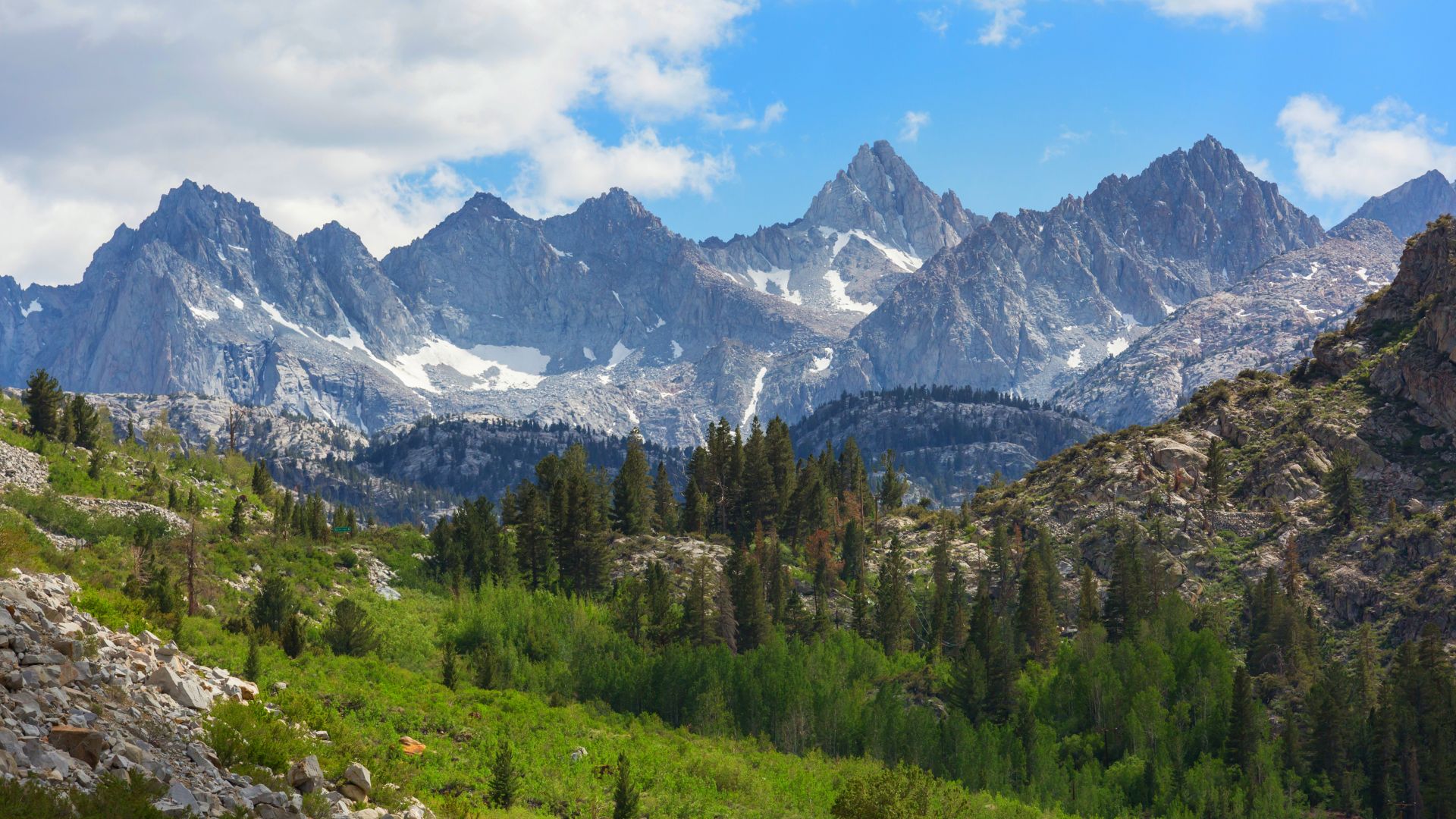
Choosing the Best Activities for Each Season
Spring Activities:
- Hike lower down in the California foothills
- Catch waterfalls at their wildest
- Snap photos of roaring streams
- Stick to day hikes below 6,000 feet
Summer Activities:
- Go for multi-day backpacking
- Camp out by alpine lakes
- Tackle high elevation hikes and climbs
- Explore remote campsites far from the crowds
Fall Activities:
- Hunt for golden aspens in the eastern Sierra
- Enjoy quiet day hikes
- Photograph those epic fall landscapes
- Camp in cooler, comfy temps
I don’t recommend high Sierra backpacking before July or after September. Spring’s better spent along the Big Sur coast while the mountains thaw out.
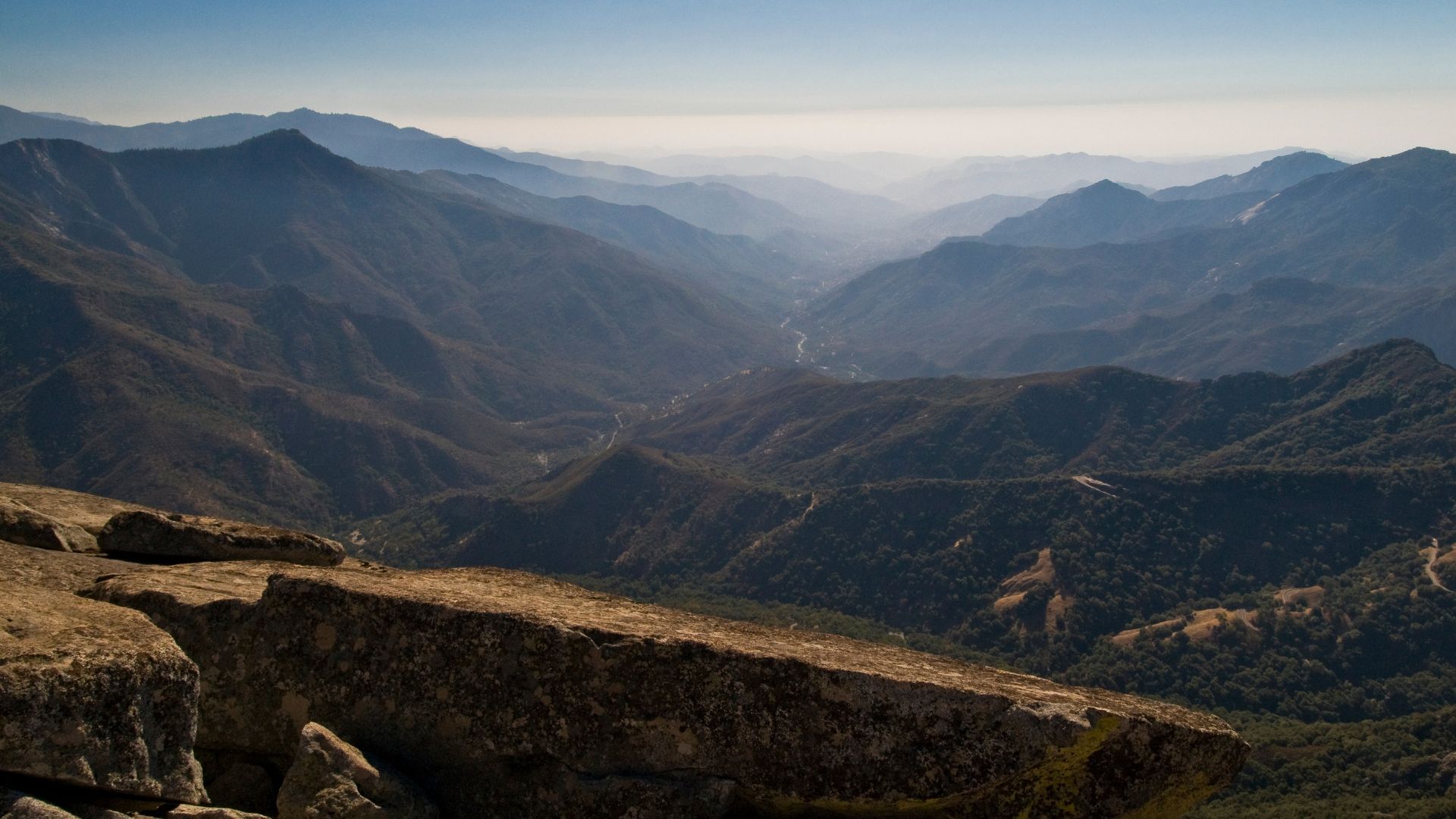
Camping and Permit Recommendations
Permit Requirements:
- Reserve on Recreation.gov about 6 months ahead
- It’s $15 plus $5 per person
- Bring photo ID to pick up your permit at the ranger station
- You’ll need a California Fire Permit for camp stoves
Camping Essentials:
- Bear canisters are a must everywhere
- Set up camp at least 200 feet from water
- Stick to established sites
- No campfires if there’s high fire danger
Popular trails like the High Sierra Trail fill up fast. I always apply right at the 6-month window.
Walk-up permits exist, but they’re a gamble. If your first choice is booked, try different dates or explore less famous spots—some are just as stunning and way easier to access.
Safety and Conservation Practices
Altitude Preparation:
Take your time as you climb above 8,000 feet.
Keep an eye on yourself and your group for signs of altitude sickness
If you start feeling worse, don’t hesitate—head down right away.
Before these trips, I like to train with a weighted pack. It makes a surprising difference.
Leave No Trace Principles:Always pack out your trash, even the toilet paper.
In the Whitney zone, wag bags are a must.
Stick to the marked trails.
Give wildlife and plants their space—this place isn’t just for us.
Emergency Preparedness:
I bring a satellite device for peace of mind, just in case.
Brush up on basic first aid; you never know when you’ll need it.
Let someone reliable know your trip plans before you go.Pack a little extra food and a warm layer—it’s worth the extra weight.
There’s basically no cell service in the High Sierra. I’ve learned to always bring backup navigation and emergency gear, because the weather can turn wild in a matter of minutes up there.
Bears roam all over the California mountains, so stash anything scented—food, toiletries, you name it—in a bear canister. It’s just part of the adventure.

